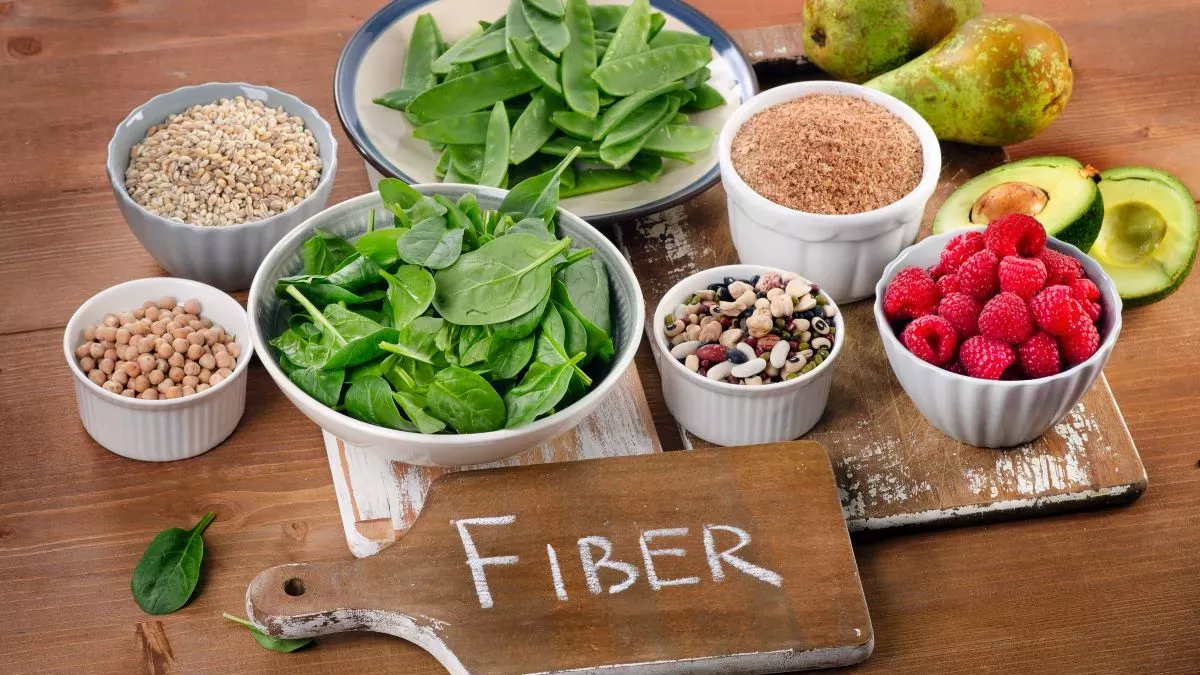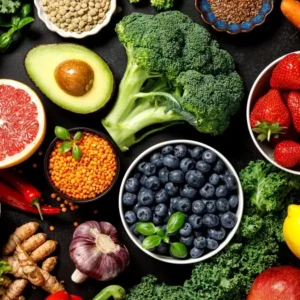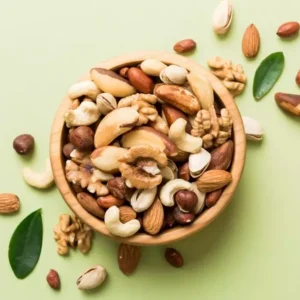Verified on 12/21/2023 by PasseportSanté
Dietary fibers are complex sugars that are not digested by our body or absorbed. They therefore have no nutritional value but nevertheless have multiple health benefits! Fiber promotes satiety, facilitates transit and has a protective effect against many diseases. But, then, where can you find fiber and what are its benefits? Zoom on the fibers.
Fiber, what is it?
Dietary fibers are complex sugars that occur naturally in plant foods and are not digested or absorbed by the digestive system.
Functional fibers
There is another type of fiber called functional fibers which are actually carbohydrates that have been isolated, extracted and/or purified.
To be part of the range of functional fibers, they must exert beneficial effects on the body. Functional fibers are not absorbed or digested by the digestive system in the same way as other dietary fibers.
The role of fiber
Fiber has different roles to play at the physiological level including the regulation of gastrointestinal function, the reduction of cholesterol levels as well as the management of glycemia (blood sugar levels).
They also contribute to the feeling of satiety which helps with weight management by reducing energy intake. There are many studies on this subject, most claiming that adequate fiber intake protects against Colon Cancer.
There are two types of fiber in plant foods:
- soluble (viscous) fibers, which have the property of reducing blood glucose and cholesterol levels;
- insoluble fibers which increase the volume of stools in order to regulate intestinal function.
Most plant foods contain both types of fiber. However, the amount of each type of fiber varies between foods.
|
Foods predominantly insoluble fiber |
Foods predominantly soluble fiber |
|
Wheat bran and wheat cereals |
Psyllium and enriched cereals |
|
Whole grains and derivatives |
Oat bran and oatmeal (oatmeal) |
|
Vegetables: cauliflower, kale, green peas, spinach, turnip, green beans |
Legumes: red beans, peas |
|
Fruits: raspberries, apple, pear, banana, blueberries, strawberries |
Fruits: orange, grapefruit, mango, dried prunes |
|
Nuts and seeds: almonds, peanuts |
Vegetables: asparagus, Brussels sprouts, carrots, onion |
|
Legumes in general |
Barley |
Foods rich in fiber
The main sources of fiber are vegetables and fruits as well as grain products, legumes and nuts.
|
Food |
Portions |
Quantities (g) |
|
Cooked legumes |
250ml (1 cup) |
12 – 17 |
|
Breakfast cereal, 100% wheat bran |
30 g (1 oz) |
10 |
|
Soy beans, fresh (edamame), boiled |
250ml (1 cup) |
8 |
|
Raspberries |
125ml (1/2 cup) |
4-6 |
|
Boiled artichoke |
1 medium (120 g) |
5 |
|
Dried prunes, cooked |
75 ml pitted (80 g) |
5 |
|
Pear with skin |
1 medium (166 g) |
5 |
|
Green peas, cooked |
125ml (1/2 cup) |
4-5 |
|
Blackberries |
125ml (1/2 cup) |
4 |
|
Canned pumpkin |
125ml (1/2 cup) |
4 |
|
Dried dates or figs |
60ml (1/4 cup) |
4 |
|
Potato with skin, baked in the oven |
1 medium (150 g) |
4 |
|
Boiled spinach |
125ml (1/2 cup) |
4 |
|
Almonds roasted in oil or dry |
60ml (1/4 cup) |
4 |
|
Boiled sweet potato |
1 medium (151 g) |
4 |
|
Apple with skin |
1 medium (138 g) |
3 |
|
Winter squash, cooked |
125ml (1/2 cup) |
3 |
|
Papaya |
1/2 fruit (153 g) |
3 |
|
Brussels sprouts, cooked |
4 choux (84 g) |
3 |
|
Blueberries |
125ml (1/2 cup) |
2-3 |
Tips for increasing your fiber intake
To increase your fiber consumption, it may be interesting to:
- replace refined grain products with brown rice, whole-wheat pasta or whole-wheat bread;
- eat more fruits containing fiber: apples and pears with their skins, raspberries and blackberries, dried fruits (prunes, apricots and dates);
- choose vegetables rich in fiber more often: artichokes, peas, beets, carrots, broccoli, cabbage, Brussels sprouts, corn, turnips, potatoes with the peel;
- eat legumes more often, excellent sources of dietary fiber: white or red beans, lentilslima beans, chickpeas;
- add lentils or dried beans to soups, stews and salads. Cook vegetarian chili;
- spread hummus on a slice of fiber-rich wholemeal bread as a snack;
- as a snack, choose high-fiber cereals (4 g of fiber per serving or more) or a homemade high-fiber muffin;
- When making muffin and cake recipes, replace white flour with whole wheat flour. Add ground flaxseed or wheat or oat bran;
- add wheat or oat bran, flax or chia seeds to your yogurts and compotes;
- add soy beans to soups, stir-fries or salads;
- as a snack, eat a small handful of dried fruits and nuts;
- read food labels and choose breads, bagels, pitas, tortillas and cookies that contain 2 to 4 g of fiber per serving.
Noticed
It is very important to increase your fiber intake gradually and drink plenty of water to avoid certain gastrointestinal symptoms.
 Receive every day
Receive every day
advice from our experts
to take care of you

Daily Fiber Needs
Total fiber requirements have been established based on an intake which, according to scientific data, constitutes protection against cardiovascular diseases and diabetes.
|
Age |
Recommended intakes |
|
Babies 0 – 6 months |
ND |
|
Babies 7 – 12 months |
ND |
|
Children 2-5 years old |
15 g |
|
Children 5 – 11 years old |
20 g |
|
Children 11-16 years old |
25 g |
|
Teenagers 17 and over |
30 g |
|
Adults |
25 to 30 g |
|
Pregnant and lactating women |
30 g |
Potential fiber interactions
A very high fiber intake could harm the absorption of different nutrients including calcium, magnesiumiron and zinc.
However, when there is no deficiency of these nutrients in the diet, adequate fiber intake does not appear to compromise stores of these nutrients.
Fiber deficiency and excess: what are the effects?
Fiber deficiency
Since fiber is not an essential nutrient, low intake does not cause deficiency symptoms. However, insufficient fiber intake can lead to constipation due to low fecal volume.
Excess fiber
Excessive fiber intake has no harmful effects apart from certain gastrointestinal symptoms such as bloating or gas. Overconsumption is very unlikely.
The dietician’s opinion
Dietary fiber is essential for the proper functioning of the body and, when consumed in sufficient quantities, can help prevent many ailments: digestive disorders, digestive cancers, hyperglycemia, etc. To easily increase your daily fiber intake, simply replace breads and refined products with whole foods and stock up on fruits and vegetables at each meal! Don’t forget to drink enough water, i.e. 1.5 to 2L per day, to optimize the benefits of fiber.

Dietitian Nutritionist
December 21, 2023, at 2:49 p.m.
95% Readers found this article helpful And you ?
Was this article useful to you?










